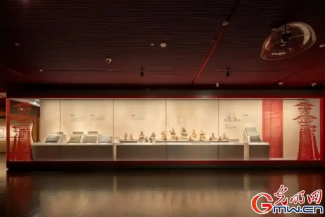
A special exhibition at the National Centre for the Performing Arts’ exhibition hall in Beijing lets visitors hear sounds from ancient Chinese civilizations. Running from May 25 to August 17, “Melodies Between Mountains and Rivers: Selected Historical Musical Relics from Sichuan and Chongqing Regions” displays over 200 precious cultural objects from museums across Sichuan and Chongqing.
These artifacts share the rich musical and dance history of these regions. Li Bei, an expert from the Sichuan Museums Association, explains that the exhibition helps protect special local traditions while introducing them to new audiences. Most importantly, it helps young people connect with their cultural roots.
Among the oldest items is a pottery rattle found in Chongqing in 1959. Made over 5,000 years ago during the Neolithic Age, it offers a direct sound link to early Chinese music. Visitors can imagine how ancient people used such instruments in daily life and special events.
The exhibition also features impressive bronze bells from the Warring States period (475-221 BC). These bells, important for ceremonies, show the advanced metalworking skills of ancient China. One special bell found in Sichuan has detailed cicada designs. Experts note that these bells represent how music connected to both government activities and spiritual practices.
Dance history comes alive through clay figures. A particularly interesting piece is an Eastern Han Dynasty (AD 25-220) brick painting discovered in Sichuan. It shows a female dancer moving gracefully on drums and plates with a scarf in hand. Beside her, another dancer bends backward while a man juggles balls, capturing the lively spirit of performances from long ago.
Guqin instruments made by Sichuan’s famous Lei family form another key part. According to stories, Lei Wei, the family’s greatest maker, would listen to wind in mountain trees during snowfall to choose perfect wood for his instruments. Chongqing’s collection of over 50 guqin pieces, some from the Tang Dynasty (618-907), ranks among China’s finest.
The exhibition also celebrates Sichuan Opera’s development during the Ming and Qing dynasties through painted screens and clay figures. Traditional instruments from Sichuan’s ethnic groups like the Yi people’s moon lute and Qiang flutes further show the region’s musical diversity.
Wang Ban, vice-president of the center, states this is the first time Beijing has seen the thousand-year musical history of Sichuan and Chongqing. The exhibition builds a bridge between past and present, helping modern audiences feel the beauty of ancient music and dance.
原创编写 版权所有 侵权必究! 每日更新 个性化阅读 英语飙升!
1.1. What basic information does the first paragraph provide about the exhibition?
A Free admission details.
B Time and exhibit numbers.
C Visitor age limits.
D Ticket booking methods.
解析:选B。B 细节理解题。根据第一段可知,原文明确提及展览时间(May 25-August 17)和展品数量(over 200 cultural objects)。故选B。
2.2. What development in ancient Chinese music is shown through the relics?
A Simpler to complex instruments.
B Religious to entertainment use.
C Local to international spread.
D Manual to machine production.
解析:选A。A 推理判断题。第三段新石器时代陶响器(primitive instrument)与第四段战国编钟(advanced bronze bells)形成技术演进对比。干扰项B(宗教转娱乐)属“以偏概全”(仅部分用途),C(国际传播)属“无中生有”,D(机器生产)属“颠倒黑白”。故选A。
3.3. What can be inferred about the Eastern Han Dynasty performance scene?
A Strictly religious purpose.
B Highly skilled performers.
C Limited audience participation.
D Simple movement patterns.
解析:选B。B 推理判断题。根据第五段的“gracefully on drums”,“juggles balls”等描述可推知表演者技艺高超。干扰项A(宗教目的)属“主观臆断”,C(观众参与少)属“文不对题”,D(动作简单)与原文“lively spirit”形成“故意夸张”的反向干扰。故选B。
4.4. The display of Sichuan Opera artifacts and ethnic instruments primarily aims to ______.
A promote modern entertainment
B highlight political unity
C showcase cultural diversity
D increase tourism revenue
解析:选C。C 推理判断题。第七段明确点出民族乐器(如彝族月琴、羌笛)“show the region’s musical diversity”,并且通过四川歌剧展品(彩绘屏风、陶俑)呈现巴蜀地区千年艺术演变,呼应多样性主题;第八段王斑总结展览“builds a bridge between past and present”,强调古今文化传承的本质是多样性价值的延续。故选C。
